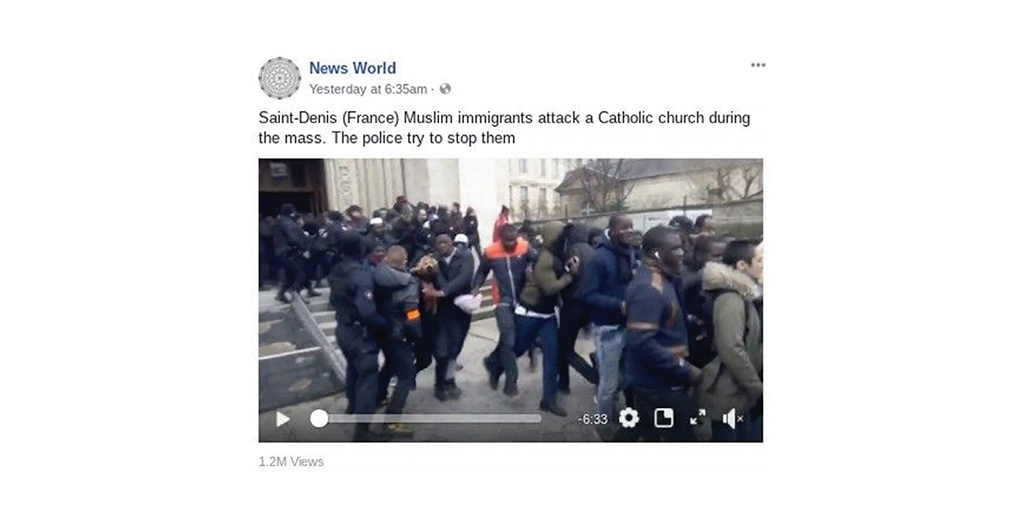We would like to thank the Cambridge Social Decision Making Lab, Ruurd Oosterwoud and DROG, Design Studio Gusmanson, the Economic and Social Research Council (ESRC), and the University of Cambridge for their support and for funding this research. We also thank the editors and reviewers for their helpful feedback on an earlier version of this chapter.
What is fake news?
Fake news appears everywhere. After gaining steam during the 2016 US presidential election, the phrase has become ubiquitous in popular media. US President Donald Trump uses it to lambast journalists and media outlets for what he sees as biased coverage; researchers build algorithms to detect false and misleading stories and document their spread; Facebook is regularly forced to explain how it intends to prevent fake news from going viral on its platform; and governments are taking steps to crack down on fake news stories circulating on the internet (Bremner, 2018; Shao et al., 2018; Wakabayashi, 2017).
Accordingly, “fake news” has rapidly become a catchall phrase that lacks an accepted working definition (Tandoc Jr, Lim, & Ling, 2018). Although some have attempted to explicate the “science of fake news” (e.g., Lazer et al., 2018), if parties with such diverse interests as the BBC and President Donald Trump are using the term and take it to mean entirely different things in different contexts, it becomes difficult to know what we talk about when we talk about fake news. It is also quite clear that the term does not do a very good job at describing the full breadth of the problem. Perhaps a sensible definition of “fake news” could be “fabricated information that mimics news media content in form, but not in organizational process or intent” (Lazer et al., 2018, p. 1). Snopes is one of the websites that keeps track of stories like this. Examples are not hard to find: headlines like “Australia to Forcibly Vaccinate Citizens via Chemtrails”, “Melania Trump Bans White House Staff from Taking Flu Shot” and “Muslim Doctor Refuses to Treat Christian Girl on Board a Flight” are just one Google search away (Adl-Tabatabai, 2016; Baxter, 2018; Patriot United, 2018). But news stories do not have to be completely false to be misleading. It is easy to quote people out of context to make it look like they are saying something that they never said, or to add misleading context to a video or image. For example, see Figure 9.1. This was a commentary posted by the Facebook page “News World” on March 20, 2018. The video purports to show Muslim immigrants in France attacking a Catholic church during mass. It was viewed about 1.2 million times within a day after it was posted. Politicians, including Front National leader Marine le Pen, expressed their outrage on Twitter, writing that the church had been “desecrated” (Le Pen, 2018).
However, fact checkers were quick to point out a number of problems with these claims. There was no evidence of the protesters’ religion or the time of their arrival to France. Furthermore, the church was not “attacked”, at least not according to church members themselves. Instead, the people in the video were protesting a proposed bill that would make obtaining asylum in the country more difficult (Snopes, 2018). The demonstration remained nonviolent.

The problem with the Facebook post in Figure 9.1 is not that the information is completely false or that the events shown in the video never happened. Rather, it is the misleading context provided in the post that does most of the actual damage. In short, from a psychological perspective, intent matters, and misleading and fake are not entirely the same thing. It is therefore worthwhile to think of the different types of “fake news” along a spectrum. On one end of the spectrum we have misinformation, which is simply information that is false or incorrect (and can include human error). Next, we have disinformation, which involves misinformation coupled with a deliberate intent to deceive an audience. Compared to simple human error, the involvement of intent has important psychological connotations (van der Linden, 2017; van der Linden, Roozenbeek, Oosterwoud, Compton, & Lewandowsky, 2018). Propaganda is then defined as disinformation paired with an explicit or implicit political agenda (van der Linden, 2017). To keep things simple, we will be using the term disinformation instead of fake news in the current chapter, to ensure that we are not just talking about fake stories but about media manipulation more generally.
